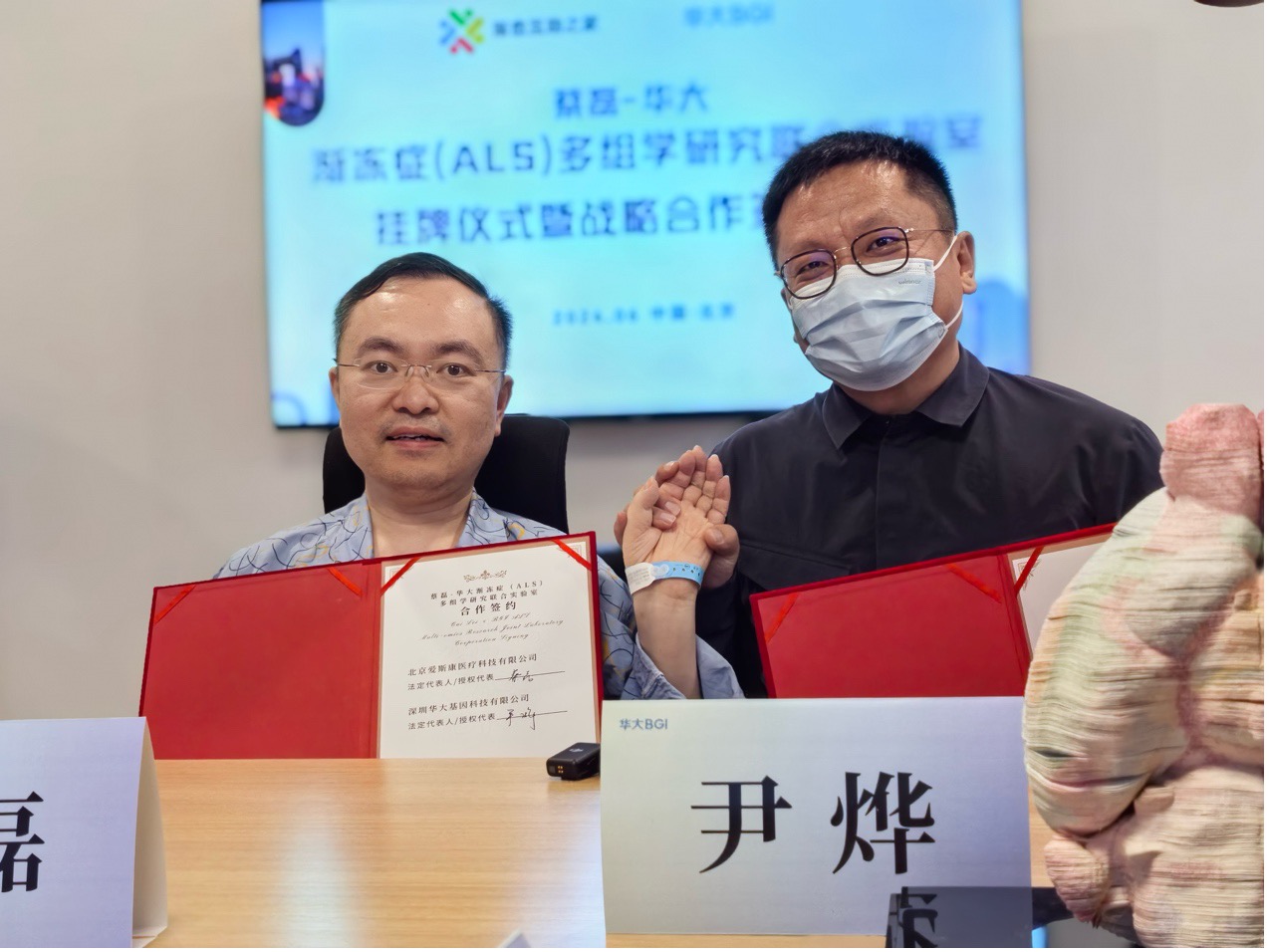Amyotrophic Lateral Sclerosis (ALS) is a rare and terrifying disease that more than 200,000 people are living with globally. The disease affects their motor neurons so that the brain and muscles are unable to communicate. This can lead to progressive paralysis and the inability to move, speak, swallow and eventually breathe.
 ALS affects motor neurons, disrupting communication between the brain and muscles. This can lead to progressive paralysis, making it increasingly difficult to move, speak, swallow, and eventually breathe.
ALS affects motor neurons, disrupting communication between the brain and muscles. This can lead to progressive paralysis, making it increasingly difficult to move, speak, swallow, and eventually breathe.
Renowned theoretical physicist, Stephen Hawking, survived 55 years with ALS, but for many people the survival rate is less than one-tenth of this.
Understanding what causes ALS is a critical first step in finding a cure. While genomics research can contribute to this, it is not a straight forward solution as BGI Group CEO, Dr. Yin Ye explains: “This is a complex disease. The exact causes of ALS are unclear. They may be related to age and physical trauma. We need to find the key factors that induce ALS, by comparing the genetic differences between ALS patients and healthy people.”
As part of his commitment to finding a solution for ALS, Dr. Yin, together with Mr. Cai Lei, a former executive of JD.com and an ALS sufferer, launched a program in 2023 to provide a free whole-genome sequencing and analysis program for patients with ALS. By examining the genome of multiple ALS patients and their families, scientists can begin to understand the causes of gene mutation associated with ALS.
“The first phase of the program sequenced and analyzed 184 samples from 74 family lineages,” explains Dr. Yin. “The results were encouraging. We found about six times more suspected gene loci than detected through traditional testing.”
The testing also indicated that whole genome sequencing of families would be helpful. In October 2023, Dr. Yin announced additional free whole genome sequencing testing for 200 family lineages, and using BGI’s latest blood collection technology that is more convenient for patients and can provide more precise results.
In addition, BGI is looking at how its latest cutting-edge spatial multi-omics technology, Stereo-seq, can be used to examine the relationship of cells and see how they react with each other over time and mutate.
Stereo-seq combines a number of scientific advances and combines DNA nanoball (DNB)-patterned arrays and in situ RNA capture to create spatial enhanced resolution omics sequencing. The biggest Stereo-seq sequencing chip is 13 cm × 13 cm, which is 500 times bigger than other spatial transcriptomic technology’s capture area, so that it is possible for a complete tissue section of a large organ to be analyzed. With its 500 nm resolution, it also allows every biological process to be presented at a resolution that has never been seen before.
With these advances scientists can map a full catalog of cell types and cell states, enabling them to examine not only individual cells, but also the relationship between cells within the microenvironment. What’s more, they can even map the cells over time, seeing how they grow and change, organ by organ, and creating physiology atlases.
On June 7, 2024, Mr. Cai Lei and Dr. Yin Ye, announced the establishment of "Cai Lei & BGI ALS Multi-omics Research Joint Laboratory," aimed at accelerating ALS research.
 On June 7, 2024, Mr. Cai Lei (left) and Dr. Yin Ye signed a strategic cooperation agreement to officially establish the "Cai Lei & BGI ALS Multi-omics Research Joint Laboratory."
On June 7, 2024, Mr. Cai Lei (left) and Dr. Yin Ye signed a strategic cooperation agreement to officially establish the "Cai Lei & BGI ALS Multi-omics Research Joint Laboratory."
While many may despair about ALS, Dr. Yin sees hope: “I see a promising future in rare disease research because we have more fundamental tools that enable us to look into the fundamentals of ALS. The advances in high throughput sequencing and the emergence of more affordable genetic testing are undoubtedly accelerating the process of deciphering ALS.”
“I very much hope that in the coming years, we will be able to make significant advances to finding the causes of ALS and to finding a possible cure.” He added.



